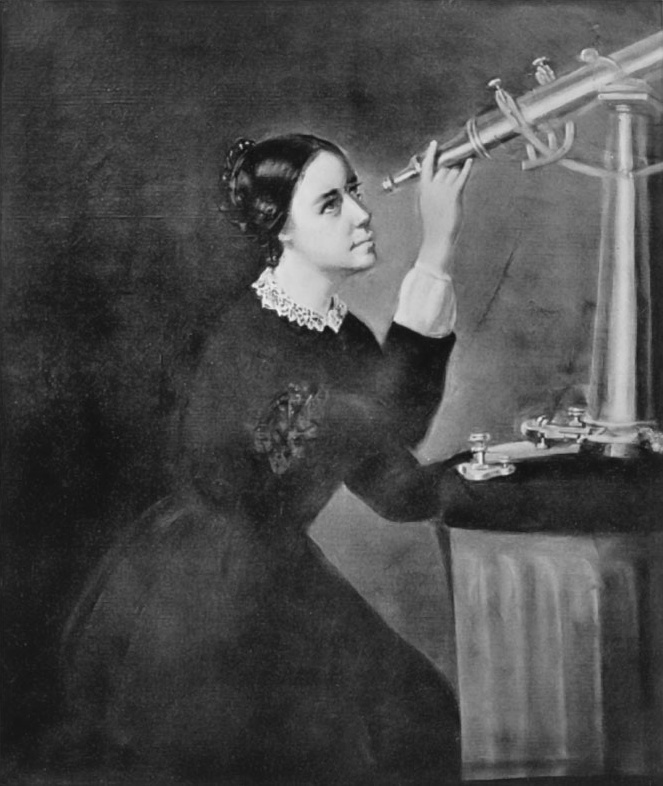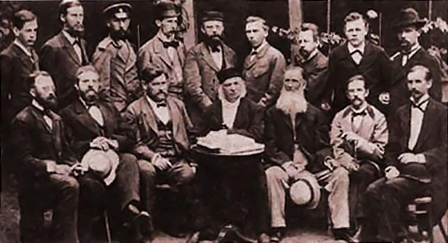|
Elena V. Pitjeva
__NOTOC__ Elena Vladimirovna Pitjeva (Елена Владимировна Питьева) is a Russian astronomer working at the Institute of Applied Astronomy, Russian Academy of Sciences, St. Petersburg. She has published over 100 articles, as listed in Google Scholar and the Astrophysics Data System in the field of solar system dynamics and celestial mechanics. She began employment activity as an engineer-observer at the Astrophysical observation station of the Astronomical Observatory of Saint Petersburg State University, Leningrad State University in Byurakan (Armenia). Then Pitjeva worked at the Institute of Theoretical Astronomy of the USSA Academy of Science and the Institute Applied Astronomy RAS since the date of its foundation in 1988 as researcher and senior researcher. At present she is head of the Laboratory of ephemerides, Ephemeris Astronomy of this institute. Major research interests of Pitjeva include the construction of numerical ephemerides of the planets, the ... [...More Info...] [...Related Items...] OR: [Wikipedia] [Google] [Baidu] |
Institute Of Applied Astronomy
The Institute of Applied Astronomy of the Russian Academy of Sciences (''name in Russian'': Институт прикладной астрономии — ''official name in Russian'': Федеральное государственное бюджетное учреждение науки Институт прикладной астрономии Российской академии наук (Federal State Budgetary Institution of Science Institute of Applied Astronomy of the Russian Academy of Sciences) — ''abbreviated name in Russian'': ИПА РАН — ''abbreviated name in English'': IAA RAS) is one of the world's largest astronomical institutes, known for research in Ephemeris#Modern ephemeris, ephemeris astronomy, classical and relativistic celestial mechanics, radio astronomy and radio interferometry, space geodesy, fundamental coordinate-time support, and development of new methods in astrometry and geodynamics. Directors * 1988–2011 Andrey Mikhailovich Finkelstein * ... [...More Info...] [...Related Items...] OR: [Wikipedia] [Google] [Baidu] |
Women Astronomers
The following is a list of astronomers, astrophysicists and other notable women who have made contributions to the field of astronomy. __NOTOC__ A * Madge Adam (1912–2001), English solar astronomer * Maggie Aderin-Pocock (born 1968), English space scientist * Conny Aerts (born 1966), Belgian astrophysicist specializing in asteroseismology * Aglaonike (c. 1st or 2nd Century BCE), ancient Greek astronomer and thaumaturge * María Luisa Aguilar Hurtado (1938–2015), Peruvian astronomer * Eva Ahnert-Rohlfs (1912–1954), German variable star astronomer * Elizabeth Alexander (1908–1958), English geologist and physicist * Leah Allen (1884–1973), American astronomer and educator * Adelaide Ames (1900 - 1932), American astronomer * Anja Cetti Andersen (born 1965), Danish astronomer focused on cosmic dust * Necia H. Apfel (born 1930), American astronomer and educator * Alice Archenhold (1874–1943), German astronomer * Anne Archibald, Canadian astronomer and educator ... [...More Info...] [...Related Items...] OR: [Wikipedia] [Google] [Baidu] |
Russian Astronomers
This list of Russian astronomers and astrophysicists includes the famous astronomers, astrophysicists and cosmologists from the Russian Empire, the Soviet Union and the Russian Federation. Alphabetical list __NOTOC__ A * Tateos Agekian, one of the pioneers of Russian and world Stellar dynamics, discoverer of two evolutionary sequences of stellar systems: nearly spherical and strongly flattened *Vladimir Albitsky, discovered a significant number of asteroids *Viktor Ambartsumian, one of the founders of theoretical astrophysics, discoverer of stellar associations, founder of Byurakan Observatory in Armenia * Andrejs Auzāns, director of the Tashkent observatory, 1911-1916 B * Nikolai P. Barabashov, co-author of the ground breaking publication of the first pictures of the far side of the Moon in 1961, called ''Atlas of the Other Side of the Moon''; a crater and a planet were named after him * Vladimir Belinski, an author of the BKL singularity model of the Universe evolution ... [...More Info...] [...Related Items...] OR: [Wikipedia] [Google] [Baidu] |
H-index
The ''h''-index is an author-level metric that measures both the productivity and citation impact of the publications, initially used for an individual scientist or scholar. The ''h''-index correlates with obvious success indicators such as winning the Nobel Prize, being accepted for research fellowships and holding positions at top universities. The index is based on the set of the scientist's most cited papers and the number of citations that they have received in other publications. The index has more recently been applied to the productivity and impact of a scholarly journal as well as a group of scientists, such as a department or university or country. The index was suggested in 2005 by Jorge E. Hirsch, a physicist at UC San Diego, as a tool for determining theoretical physicists' relative quality and is sometimes called the Hirsch index or Hirsch number. Definition and purpose The ''h''-index is defined as the maximum value of ''h'' such that the given author/ ... [...More Info...] [...Related Items...] OR: [Wikipedia] [Google] [Baidu] |
NASA ADS
The SAO/NASA Astrophysics Data System (ADS) is an online database of over 16 million astronomy and physics papers from both peer reviewed and non-peer reviewed sources. Abstracts are available free online for almost all articles, and full scanned articles are available in Graphics Interchange Format (GIF) and Portable Document Format (PDF) for older articles. It was developed by the National Aeronautics and Space Administration (NASA), and is managed by the Smithsonian Astrophysical Observatory. ADS is a powerful research tool and has had a significant impact on the efficiency of astronomical research since it was launched in 1992. Literature searches that previously would have taken days or weeks can now be carried out in seconds via the ADS search engine, which is custom-built for astronomical needs. Studies have found that the benefit to astronomy of the ADS is equivalent to several hundred million US dollars annually, and the system is estimated to have tripled the readersh ... [...More Info...] [...Related Items...] OR: [Wikipedia] [Google] [Baidu] |
Paris, France
Paris () is the capital and most populous city of France, with an estimated population of 2,165,423 residents in 2019 in an area of more than 105 km² (41 sq mi), making it the 30th most densely populated city in the world in 2020. Since the 17th century, Paris has been one of the world's major centres of finance, diplomacy, commerce, fashion, gastronomy, and science. For its leading role in the arts and sciences, as well as its very early system of street lighting, in the 19th century it became known as "the City of Light". Like London, prior to the Second World War, it was also sometimes called the capital of the world. The City of Paris is the centre of the Île-de-France region, or Paris Region, with an estimated population of 12,262,544 in 2019, or about 19% of the population of France, making the region France's primate city. The Paris Region had a GDP of €739 billion ($743 billion) in 2019, which is the highest in Europe. According to the Economist Intell ... [...More Info...] [...Related Items...] OR: [Wikipedia] [Google] [Baidu] |
International Journal Of Modern Physics D
The ''International Journal of Modern Physics'' is a series of Physics journals published by World Scientific. ''International Journal of Modern Physics A'' The ''International Journal of Modern Physics A'' was established in 1986, and covers specifically particles and fields, gravitation, cosmology, and nuclear physics. The journal is abstracted and indexed in: ''International Journal of Modern Physics B'' The ''International Journal of Modern Physics B'' was established in 1987. It covers specifically developments in condensed matter, statistical and applied physics, and high Tc superconductivity. The journal is abstracted and indexed in: ''International Journal of Modern Physics C'' The ''International Journal of Modern Physics C'' was established in 1990. It covers specifically computational physics Computational physics is the study and implementation of numerical analysis to solve problems in physics for which a quantitative theory already exists. Historical ... [...More Info...] [...Related Items...] OR: [Wikipedia] [Google] [Baidu] |
Celestial Mechanics And Dynamical Astronomy
''Celestial Mechanics and Dynamical Astronomy'' is a scientific journal covering the fields of astronomy and astrophysics. It was established as ''Celestial Mechanics'' in June 1969. The journal is published by Springer Science+Business Media and the editor-in-chief is Alessandra Celletti (University of Rome Tor Vergata), while Sylvio Ferraz-Mello (University of São Paulo) is honorary editor. Abstracting and indexing The journal is abstracted and indexed in: According to the ''Journal Citation Reports'', the journal has a 2020 impact factor The impact factor (IF) or journal impact factor (JIF) of an academic journal is a scientometric index calculated by Clarivate that reflects the yearly mean number of citations of articles published in the last two years in a given journal, as ... of 1.664. References External links * {{astronomy-journal-stub Astronomy journals Publications established in 1969 Springer Science+Business Media academic journals Monthly journ ... [...More Info...] [...Related Items...] OR: [Wikipedia] [Google] [Baidu] |
Victor A
The name Victor or Viktor may refer to: * Victor (name), including a list of people with the given name, mononym, or surname Arts and entertainment Film * ''Victor'' (1951 film), a French drama film * ''Victor'' (1993 film), a French short film * ''Victor'' (2008 film), a 2008 TV film about Canadian swimmer Victor Davis * ''Victor'' (2009 film), a French comedy * ''Victor'', a 2017 film about Victor Torres by Brandon Dickerson * ''Viktor'' (film), a 2014 Franco/Russian film Music * ''Victor'' (album), a 1996 album by Alex Lifeson * "Victor", a song from the 1979 album '' Eat to the Beat'' by Blondie Businesses * Victor Talking Machine Company, early 20th century American recording company, forerunner of RCA Records * Victor Company of Japan, usually known as JVC, a Japanese electronics corporation originally a subsidiary of the Victor Talking Machine Company ** Victor Entertainment, or JVCKenwood Victor Entertainment, a Japanese record label ** Victor Interactive ... [...More Info...] [...Related Items...] OR: [Wikipedia] [Google] [Baidu] |
International Astronomical Union
The International Astronomical Union (IAU; french: link=yes, Union astronomique internationale, UAI) is a nongovernmental organisation with the objective of advancing astronomy in all aspects, including promoting astronomical research, outreach, education, and development through global cooperation. It was founded in 1919 and is based in Paris, France. The IAU is composed of individual members, who include both professional astronomers and junior scientists, and national members, such as professional associations, national societies, or academic institutions. Individual members are organised into divisions, committees, and working groups centered on particular subdisciplines, subjects, or initiatives. As of 2018, the Union had over 13,700 individual members, spanning 90 countries, and 82 national members. Among the key activities of the IAU is serving as a forum for scientific conferences. It sponsors nine annual symposia and holds a triannual General Assembly that sets policy ... [...More Info...] [...Related Items...] OR: [Wikipedia] [Google] [Baidu] |
Russian Academy Of Sciences
The Russian Academy of Sciences (RAS; russian: Росси́йская акаде́мия нау́к (РАН) ''Rossíyskaya akadémiya naúk'') consists of the national academy of Russia; a network of scientific research institutes from across the Russian Federation; and additional scientific and social units such as libraries, publishing units, and hospitals. Peter the Great established the Academy (then the St. Petersburg Academy of Sciences) in 1724 with guidance from Gottfried Leibniz. From its establishment, the Academy benefitted from a slate of foreign scholars as professors; the Academy then gained its first clear set of goals from the 1747 Charter. The Academy functioned as a university and research center throughout the mid-18th century until the university was dissolved, leaving research as the main pillar of the institution. The rest of the 18th century continuing on through the 19th century consisted of many published academic works from Academy scholars and a few ... [...More Info...] [...Related Items...] OR: [Wikipedia] [Google] [Baidu] |



